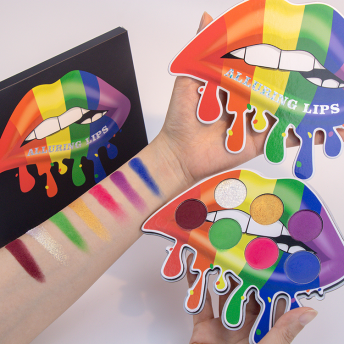Beauty Trends in The Next Five Years
Beauty Trends in The Next Five Years
Long controlled by retail conglomerates, the beauty industry has turned online. Until the pandemic hit, the global beauty market was surging.
Now, experts suggest that COVID's impact on the industry could cause a revenue decline of up to 35%.
Historically, though, the beauty industry has been resilient.
Up from $483B in 2020 to $511B in 2021 — and with an annual compounded growth rate of 4.75% worldwide — it's predicted to exceed $716B by 2025. And $784.6B by 2027.
Here are the top trends impacting the beauty, cosmetics, and personal care industries in 2022 and beyond.
1. Grown-to-Order Beauty
For many beauty brands, one of the toughest challenges of dealing with the global pandemic in 2020 and 2021 was the effect it had on manufacturing and supply chains.
As a result, Many brands will look to mitigate supply chain and overstock issues in 2022 by shifting to increasingly on-demand and made-to-order practices. It is called “grown-to-order” beauty.
With the specter of second and third waves of corona virus outbreaks, retailers will need to move to more agile processes that allow them to avoid the discounting and supply chain issues faced during the summer of 2021.
Some ways of doing this include moving towards shorter supply chains, the digitization of the supply chain (aka 3D design), and by offering pre-orders. By combining personalization and sustainability elements, grown-to-order beauty products will only continue to grow in popularity.
In this evolution of 'slow beauty', consumers will move away from instant gratification and instead be part of the product's creation process while also helping brands to avoid waste via small-batch productions.

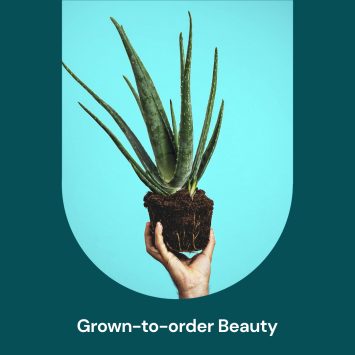
Grown-to-Order Beauty
2. Increased Inclusiveness
As companies across the board have begun to address injustices throughout society, beauty brands are making moves, too.
Data shows that sales of multicultural beauty products are growing at a rate that's double the conventional beauty market.
In fact, it's estimated that black women spend 80% more on beauty products than their non-black counterparts.
One of the best-known multicultural makeup lines in Fenty Beauty.
Founded by musical superstar Rihanna in 2017, Fenty Beauty was named to Time's list of The 25 Best Inventions of 2017.
The brand has continued to evolve and now features 50 shades to offer nearly every woman the chance to have her makeup match her complexion.
While beauty inclusivity is hardly just a passing trend, it is something that many of the experts we spoke to noted as being of increasing importance across every aspect of the industry moving forward into the new year. At Net-A-Porter, Hands says they "will be focusing hugely on inclusivity in all categories of beauty" this year and are excited to be adding several BIPOC-owned brands to their roster in the coming months.
While this represents just a small fraction of the work that still needs to be done to ensure a more inclusive beauty industry for all, it is a sign that things are moving—albeit slowly—in the right direction. In the meantime, be sure to check out our guide to some of our favorite Black-owned beauty brands to support now and always.
Inclusive Highlights From Mola Cosmetics
3. Clean Beauty With Natural Ingredients
In addition to the above mentioned, there's another divisive trend — natural and sustainable products.
Because of rising incomes, consumers increasingly consider effectiveness and ingredients over price. As a result, positioning now focuses on demonstrating quality through customer reviews and UGC as well as sustainability through formulation.
To win in the fight over product superiority comes from the marketing use of three little words: natural, organic, or clean.
But, “clean beauty” and “organic makeup”are more than just buzzwords. The global value for natural cosmetics is expected to reach $54.5 billion by 2027.
According to the Environmental Working Group, the average person applies nine personal care products to their body daily.
In those nine products, there's an average of 126 unique ingredients.
In 2021 and beyond, more and more women are questioning what exactly those chemicals are and what they mean for their bodies.
Fortunately, our company has natural and harmless beauty products that meet customer needs. Everything is customizable from the formula to the packaging, branding and colors. Customized products made by Mola cosmetics will help you attract more customers.
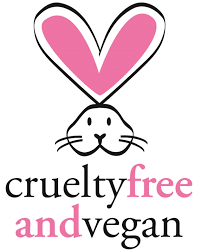
Many customers want Cruelty-free and vegan cosmetics
4. Celebrity worship effect
However you feel about celebrity and influencer-driven beauty brands, there's no denying the hold they continue to have on the industry. From Rihanna's Fenty Skin to Jennifer Lopez's recently launched JLo Beauty line, celebrity brands hit peak saturation in 2020, and by the looks of it, they're just getting started.
Beauty is experiencing the “cult of personality” like never before, and the brands behind these names will only continue to thrive in 2021.
From the individuals who have elevated themselves and their products through their live videos (such as Patrick Ta, Patrick Starrr, and James Charles) to the frank, impassioned activism of UOMA Beauty's founder Sharon Chuter, and the infectious enthusiasm of Charlotte Tilbury, Huda Kattan, and most recently Jamie Genevieve, those who invite us to not only glimpse but be part of their worlds, are creating new ways to engage with their (often eponymous) ranges.
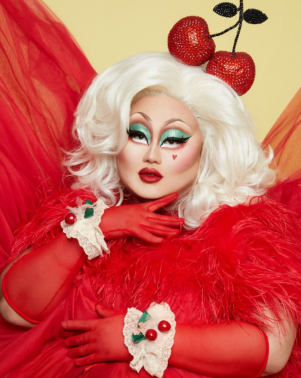
The representative brand of Celebrity worship effect -kimchichicbeauty
5. All About The Eyes
If there was one segment of the makeup industry that thrived in 2020, it was the eye category.
British retail giant John Lewis Partnership reports that mascara purchases have been up 58%, sales of eyebrow makeup have increased 34%, and eye makeup purchases have increased 19% it's showing no signs of slowing down. With most people wearing masks while out and about, we are seeing a strong focus on eyes when it comes to makeup. This has allowed brands to push the envelope in terms of innovation, resulting in some extraordinary new formulas and shades.
Luxie Inc., a makeup brush company in San Jose, California, reported that sales of their eye makeup brushes have increased by 40% since the pandemic started.Their lip brushes aren't garnering any interest. Reps from Luxie also say that the false eyelash trend, which was expected to end in 2020, has held strong.
This interest in all things related to eye makeup has been so profound that beauty experts say it's knocking out the "lipstick index." It's thought that those lipstick sales can sustain beauty brands through recessions.
So you need more diverse and more creative eye makeup products to attract customers, welcome to contact us, our professional professional designers and professional factories, can provide you with the most thoughtful customized service.
Creative Eyeshadow from Mola cosmetics
6. Growing Demand For Men's Beauty Products
Skincare and makeup for men is one of the fastest-growing trends in the beauty industry. The market for men's skincare products was worth $12.3 billion last year and is forecasted to grow to $18.9 billion by 2027. Search interest in “men's skincare”is up 121% in 5 years.
While searches for “moisturizer for men”have also increased over the last decade. Makeup for men has been gaining popularity, too. The men’s segment of global beauty and fashion products has reportedly grown faster than the women's segment for the last decade.
That explains why Chanel launched their first line of makeup for men in 2018. And why Estée Lauder's Lab Series brand specifically targets men. Sephora also rolled out a line of men's products as well.
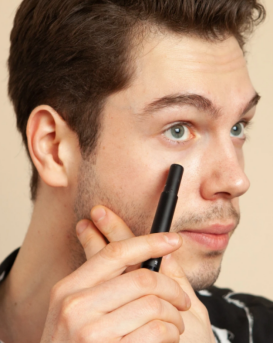
Stryx's concealer tool
Conclusion
That's it for our list of important beauty industry trends in the next five years.
Technology, COVID-19, and societal issues have impacted the beauty industry in a big way over the last few years. Whether that's a call for new products containing natural ingredients. Or a move towards e-commerce.
And we can expect more innovation and change in this space heading into 2022 and beyond.


